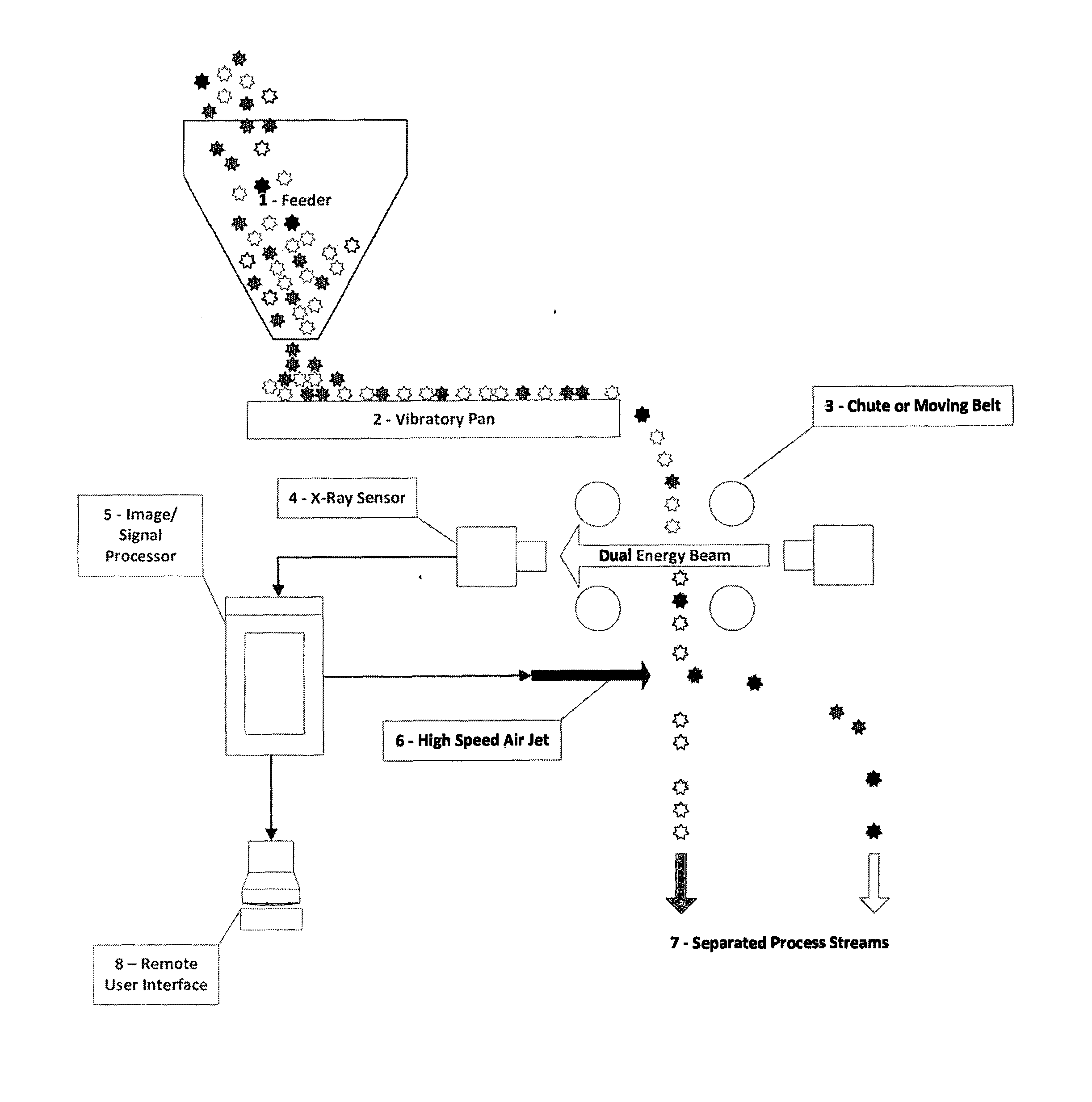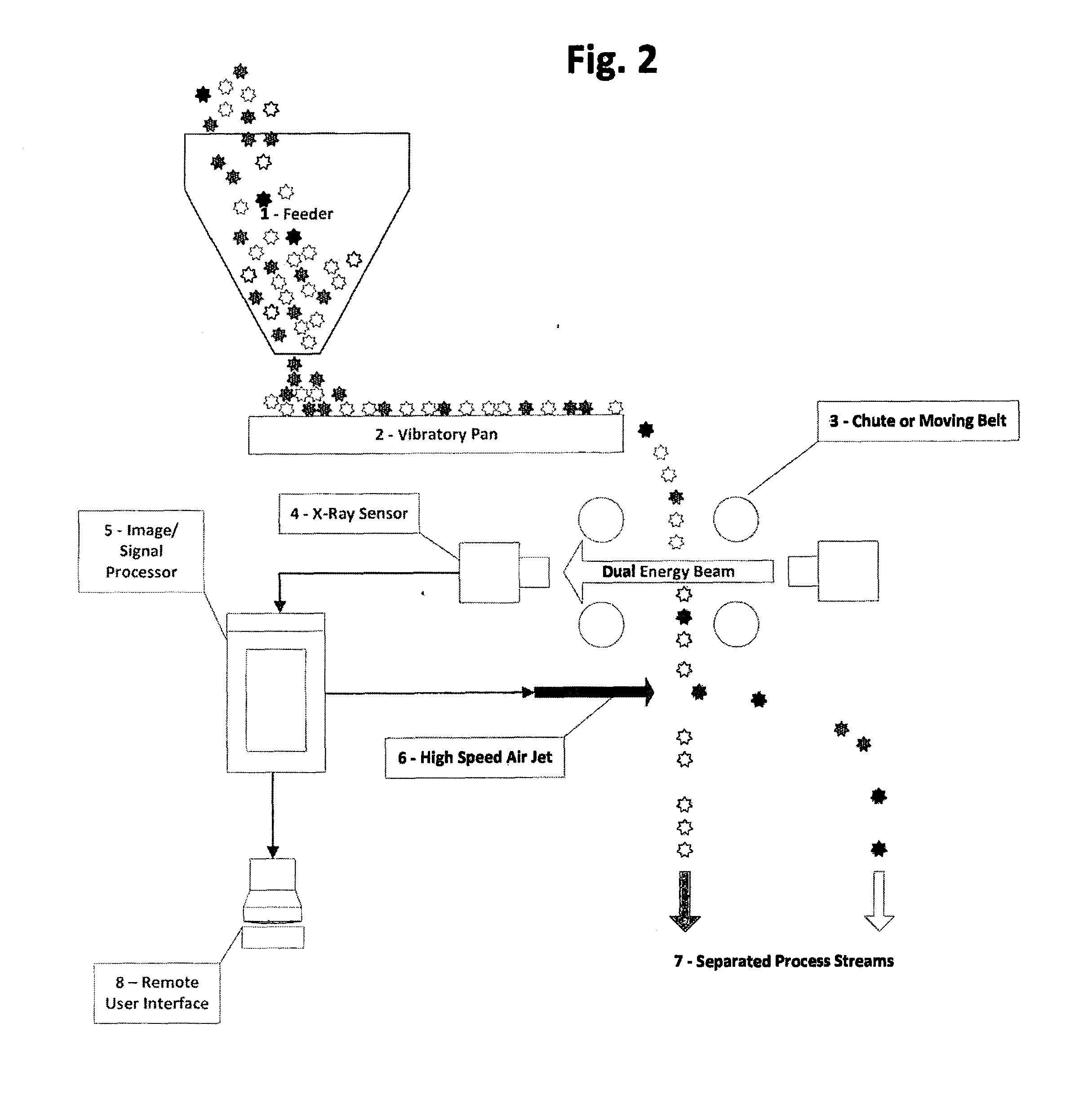Methods To Recover Cesium Or Rubidium From Secondary Ore
a technology of secondary ore and cesium ore, which is applied in the field of methods to recover cesium or rubidium from secondary ore, can solve the problems of difficult and expensive separation of cesium from undesirable metals or minerals, time-consuming and expensive cost of recovering significant amounts of cesium from low yield ore, and achieve the effect of effectively recovering cesium and rubidium
- Summary
- Abstract
- Description
- Claims
- Application Information
AI Technical Summary
Benefits of technology
Problems solved by technology
Method used
Image
Examples
example 1
[0177]In this example, a 789 kg quantity of secondary ore mined from Tanco granitic pegmatite at Bernic Lake, Manitoba, Canada was recovered. The secondary ore (with a U.S. mesh size of +5 inch) had an estimated pollucite content of 45.72 wt % (wherein all wt % unless stated otherwise, are based on the weight of the starting secondary ore). The secondary ore was estimated to have a Cs2O content of about 9 wt %. The secondary ore also contained Lepidolite, Feldspar, Quartz, SQUI, Amblygonite, and Albite, and minor amounts of other mineral / rock types.
[0178]For sorting, a dual energy X-ray transmission (DEXRT) sorter obtained from Commodas Ultrasort, GmbH, Wedel, Germany was used. The feed rate through the sorter was about 5 to 10 ton / hour. The sorter was calibrated using five (5) training sets of rocks from known ores. Each training set had the same mineral types but had a different size fraction. The following five size fractions were used to calibrate the sorter:[0179]2 inches+1.5 i...
example 2
[0189]In this example, the same procedures as in Example 1 were repeated, but with a different starting secondary ore to show the ability of the sorting techniques to process different cesium contents in the starting secondary ore. Also, different size fractions were used to calibrate and to sort. The results are set forth below in Table 2. In this example, besides the indicated mesh screen for size fraction, a bar screen was also used to allow rocks with a larger single dimension, for instance in length, to pass through and be processed. In Table 2 the first entry under Step 1 Ejects is crushed ore which would not pass through a 50 mm mesh screen which was passed through a 60 mm bar screen and collected on a 40 mm bar screen. Essentially, this was the bar screen fraction between 40 mm and 60 mm, which cannot pass through a 50 mm mesh screen. Typically this type of material has one dimension that is larger than 50 mm, but has remaining dimensions that are smaller than 50 mm and is s...
example 3
[0222]In this example, the same procedures as in Example 1 were repeated, but with a different starting secondary ore, and different size fractions were used to calibrate and to sort. Table 3 below further summarizes the results from Example 1 (identified as “feed 1” in Table 3) and in Example 2 (identified as “feed 2”) in Table 3. “Feed 3” is Example 3. In Table 3, the feed grade is a reference to the weight percent of Cs2O in the starting secondary ore. As can be seen, the starting percent of cesium was 9% or lower. Table 3 further breaks down the starting amount of cesium per size fraction. Table 3 also provides the percent of Cs2O recovery based on the amount of available cesium that was present in the starting secondary ore. For instance, feed 1 shows a 93.4% Cs2O recovery which means that 93.4% of all available cesium oxide (by weight) that was available in the starting secondary ore was recovered by the sorting techniques of the present invention. The reference to wt % recove...
PUM
 Login to View More
Login to View More Abstract
Description
Claims
Application Information
 Login to View More
Login to View More - R&D
- Intellectual Property
- Life Sciences
- Materials
- Tech Scout
- Unparalleled Data Quality
- Higher Quality Content
- 60% Fewer Hallucinations
Browse by: Latest US Patents, China's latest patents, Technical Efficacy Thesaurus, Application Domain, Technology Topic, Popular Technical Reports.
© 2025 PatSnap. All rights reserved.Legal|Privacy policy|Modern Slavery Act Transparency Statement|Sitemap|About US| Contact US: help@patsnap.com



